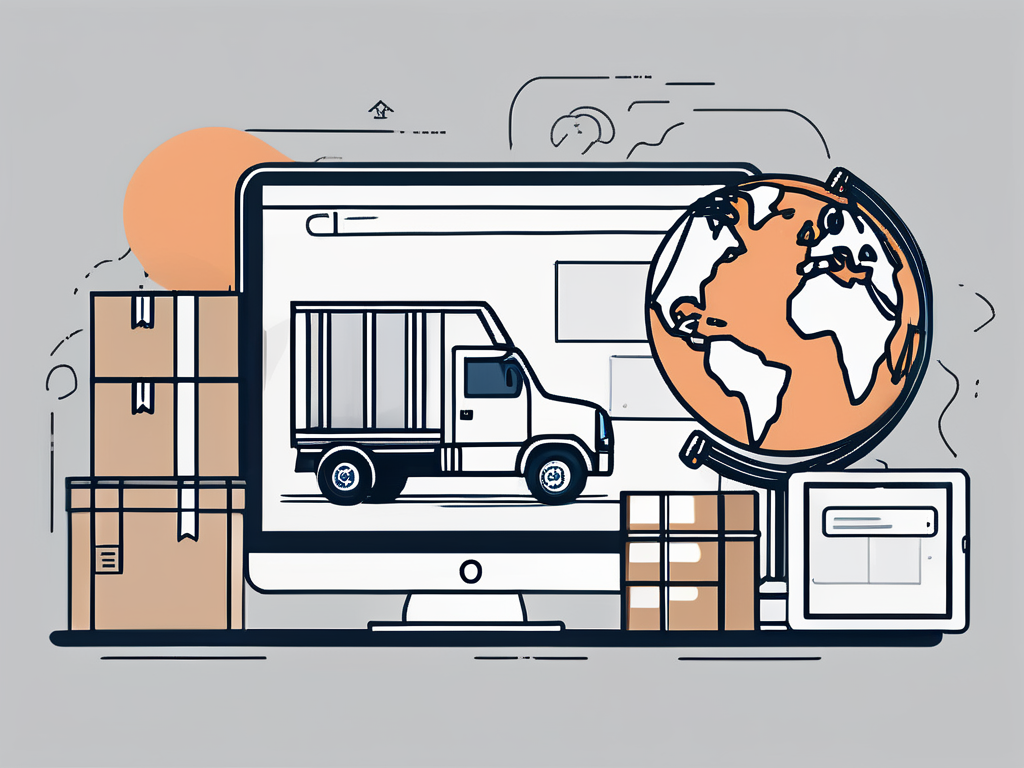In today’s fast-paced and ever-evolving digital landscape, dropshipping has emerged as a popular and lucrative business model. With its low barrier entry and minimal upfront costs, it’s no wonder that more and more aspiring entrepreneurs are turning to dropshipping to kickstart their online ventures. However, like any other form of business, success in the dropshipping industry requires careful planning, strategic execution, and continuous adaptation to market trends. In this comprehensive guide, we will take you through the essential steps of building and managing a successful dropshipping store.
Understanding the Basics of Dropshipping
What is Dropshipping?
In a traditional retail model, store owners are required to purchase products in bulk and keep them in stock until they are sold to customers. This can be quite risky for new businesses as it ties up capital and carries the risk of unsold inventory. Dropshipping, on the other hand, eliminates the need for stocking physical inventory. Instead, the dropshipping model allows store owners to partner with suppliers who handle the inventory and shipping processes. When a customer makes a purchase from a dropshipping store, the store owner simply forwards the order information to the supplier, who then ships the product directly to the customer.
Benefits of Dropshipping
Dropshipping offers several advantages over traditional retail models. For starters, it allows entrepreneurs to get their businesses up and running quickly with minimal upfront costs. Since there is no need to purchase inventory upfront, store owners can significantly reduce their financial risk. Furthermore, dropshipping offers the flexibility of managing your business from anywhere with an internet connection, making it an attractive option for digital nomads and those seeking location independence. Additionally, the wide range of products available through dropshipping allows entrepreneurs to explore various niche markets without the need to invest in bulk quantities of goods.
Common Challenges in Dropshipping
While dropshipping certainly has its perks, it’s important to be aware of the challenges that come along with it. One common challenge is the competition. With the low barrier to entry, the dropshipping market is saturated with numerous sellers vying for customers’ attention. Differentiating yourself from the competition and finding unique selling propositions can be a demanding task.
Another challenge is the reliance on suppliers. Since you don’t have direct control over the inventory, shipping, and quality of products, it’s crucial to partner with reliable suppliers who can consistently meet your customers’ expectations. Building strong relationships with suppliers and conducting thorough research before choosing them is essential to ensure smooth operations and customer satisfaction.
Finally, managing customer service and addressing issues such as returns and refunds can be time-consuming and require efficient processes and systems. Providing excellent customer service is vital for building a loyal customer base and maintaining a positive reputation in the industry. Implementing effective communication channels and establishing clear policies for returns and refunds can help streamline the customer service process.
By understanding the basics of dropshipping and being aware of the challenges it presents, entrepreneurs can make informed decisions and develop strategies to thrive in this competitive business model. With the right approach and a commitment to continuous improvement, dropshipping can offer a rewarding and profitable venture for aspiring business owners.
Setting Up Your Dropshipping Store
Choosing the Right Products
The success of your dropshipping store heavily relies on the products you choose to sell. Before diving into the selection process, it’s essential to conduct thorough market research and identify profitable niches. Look for products with high demand and manageable competition. Additionally, consider the target audience and their purchasing behavior. By understanding your ideal customer, you can curate a product selection that caters to their needs and preferences.

Selecting a Reliable Supplier
A reliable supplier is the backbone of a successful dropshipping store. When choosing a supplier, consider factors such as product quality, shipping times, and customer service. Look for suppliers who are experienced in dropshipping and have a proven track record of meeting customer expectations. It’s also advisable to request samples before committing to a partnership to assess the quality firsthand.
Building an Effective Website
Your dropshipping store’s website serves as the face of your business, so it’s crucial to create a user-friendly and visually appealing website. Invest in a responsive design that is optimized for mobile devices. Ensure that your website is easy to navigate, with clear product descriptions, high-quality images, and a secure checkout process. You may consider using e-commerce platforms like Shopify or WooCommerce, which provide user-friendly interfaces and integrations with various dropshipping apps.
Once you have set up the foundation of your dropshipping store, it’s time to focus on marketing and driving traffic to your website. Implementing effective marketing strategies will help you reach your target audience and increase your store’s visibility. Consider utilizing social media platforms, such as Facebook and Instagram, to promote your products and engage with potential customers. Collaborating with influencers in your niche can also be a powerful way to reach a wider audience and build brand credibility.
Another important aspect to consider is customer service. Providing excellent customer service is crucial for the success of your dropshipping store. Make sure to promptly respond to customer inquiries and resolve any issues that may arise. Building a strong relationship with your customers will not only lead to repeat business but also positive word-of-mouth recommendations, which can significantly contribute to the growth of your store.
Marketing Your Dropshipping Store
SEO Strategies for Dropshipping
Search Engine Optimization (SEO) plays a crucial role in driving organic traffic to your dropshipping store. Conducting thorough keyword research is essential to identify relevant and high-traffic keywords that align with your product offerings. By optimizing your website’s on-page elements, such as meta tags, headings, and product descriptions, with the identified keywords, you can significantly improve your search engine rankings.

However, SEO is not just about keyword optimization. It also involves creating high-quality content that resonates with your target audience. Consider developing informative blog posts and articles that provide valuable insights and tips related to your niche. By establishing your store as a reliable source of information, you can build trust and credibility among potential customers.
Social Media Marketing for Dropshipping
Social media platforms, such as Facebook, Instagram, and Pinterest, provide excellent opportunities for promoting your dropshipping store. To effectively leverage these platforms, it’s crucial to create engaging and visually appealing content that showcases your products. High-quality images and videos can capture the attention of your target audience and entice them to explore your store further.
In addition to creating compelling content, consider partnering with influencers who have a significant following in your niche. Collaborating with influencers can help increase brand awareness and reach a wider audience. Running contests or giveaways on social media can also generate excitement and encourage user engagement. Remember to actively engage with your audience by responding to comments and messages, fostering meaningful conversations that can lead to increased brand loyalty.
Email Marketing for Dropshipping
Building and nurturing an email list is crucial for establishing long-term relationships with your customers. To encourage visitors to subscribe to your newsletter, offer enticing incentives such as exclusive discounts or access to valuable content. Once you have a growing email list, regularly send out newsletters containing product updates, promotions, and helpful content.
Personalizing your emails based on customer preferences and past purchases can significantly enhance engagement. By tailoring your messages to individual needs and interests, you can create a more personalized shopping experience, increasing the likelihood of repeat purchases and customer loyalty.
Managing Your Dropshipping Store
Handling Customer Service
Providing excellent customer service is paramount in building trust and loyalty among your customers. Set clear and realistic expectations regarding shipping times and communication channels. Respond promptly to customer inquiries and address any concerns or issues in a professional and efficient manner. Consider implementing chatbots or customer service software to streamline your support processes.

When it comes to customer service, going the extra mile can make all the difference. Personalize your interactions with customers by using their names and referring to previous conversations or purchases. This shows that you value their business and are committed to providing a personalized experience. Additionally, consider offering proactive customer service by reaching out to customers after their purchase to ensure their satisfaction or to offer assistance if needed. By being proactive and attentive, you can exceed customer expectations and create a positive reputation for your dropshipping store.
Managing Inventory and Orders
While you don’t physically handle inventory in dropshipping, it’s crucial to keep track of product availability and coordinate with your supplier to ensure timely order fulfillment. Implement inventory management systems or apps that provide real-time updates on stock levels. Regularly review your product offerings and identify popular items or trends to optimize your inventory and capitalize on market demand.
Another aspect of managing inventory and orders is establishing strong relationships with your suppliers. Regularly communicate with them to stay informed about any changes in product availability or shipping times. By maintaining open lines of communication, you can proactively address any potential issues and ensure smooth order fulfillment. Additionally, consider diversifying your supplier base to reduce the risk of relying on a single source. This way, you can mitigate the impact of any unforeseen circumstances and maintain a consistent supply chain for your dropshipping store.
Dealing with Returns and Refunds
Returns and refunds are inevitable in any e-commerce business. Establish clear policies regarding returns and refunds and communicate them to your customers. Streamline the return process by providing easy-to-follow instructions and offering free return shipping if feasible. Analyze return patterns and product quality issues to identify areas for improvement and minimize return rates in the future.
When handling returns and refunds, prioritize customer satisfaction and aim to turn a potentially negative experience into a positive one. Offer alternative solutions such as exchanges or store credits to accommodate customers’ needs and preferences. By providing exceptional customer service during the return process, you can turn dissatisfied customers into loyal advocates for your dropshipping store. Remember, a positive customer experience even in the face of returns or refunds can significantly impact your store’s reputation and long-term success.
By following these essential steps and implementing effective strategies, you’ll be well on your way to building a successful dropshipping store. Remember that success in dropshipping requires continuous learning, adaptation, and staying up-to-date with industry trends. With dedication and perseverance, your dropshipping store can become a profitable venture in the ever-growing e-commerce landscape.
